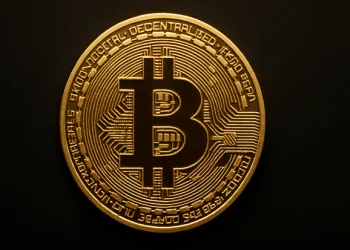Crypto is one of the most unpredictable industries, where prices can swing from one day to another, sometimes even from one hour to another.
Just take the recent global market selloff that made Bitcoin and basically almost the entire crypto market fall. Bitcoin went down from $70,000 to around $50,000 in just a few hours, and it was not the only cryptocurrency to do so.
However, some cryptocurrencies maintained their prices. Actually, they always maintain their prices, and this fact makes them very interesting and useful. Did you guess already? Yes, we’re talking about stablecoins, and here we are, ready to discuss their use cases and how they can help you in trading crypto.
What Are Stablecoins?
Simply put, stablecoins are a type of crypto project developed to maintain a consistent value, typically by pegging their worth to a stable asset like the US dollar, gold, or even other cryptocurrencies.
Unlike traditional cryptocurrencies, which can have their value significantly lowered or increased depending on market conditions and various events, stablecoins are built to stay steady. This stability is what makes them so appealing, especially for those who want to enjoy the benefits of a digital currency without the rollercoaster of emotions that usually comes with certain crypto projects.
Ok, but if they don’t make me rich, what’s the point?
Well, stablecoins are essentially a bridge between the unpredictable world of cryptocurrencies and the more stable, traditional financial system (TradFi). They offer the security, speed, and transparency of blockchain technology while minimizing the risks associated with price volatility. For traders, this means a more predictable and less stressful experience.
Types of Stablecoins
Stablecoins come in multiple forms, each with its own advantages and use cases. Some of the main types of stablecoins include:
- Fiat-Collateralized Stablecoins: They are the most popular and simple type, being backed by reserves of traditional currencies like the US dollar or Euro. For every stablecoin in circulation, a corresponding amount of fiat currency is held in reserve. You can think of fiat-collateralized stablecoins as “digital fiat.” Tether (USDT) and USD Coin (USDC) are the most popular example of such stablecoins;
- Crypto-Collateralized Stablecoins: Instead of being backed by fiat, these types of stablecoins are supported by other cryptocurrencies. They counteract the volatility of those crypto assets by being over-collateralized (holding more value in reserve than the amount of stablecoins issued). One of the best examples of crypto-collateralized stablecoins is DAI, which is backed by a mix of cryptocurrencies;
- Algorithmic Stablecoins: This type of stablecoins does not rely on any collateral. Instead, it uses algorithms and smart contracts to regulate the supply and demand of the cryptocurrency, keeping its value steady. The system automatically adjusts the number of tokens in circulation to ensure that the price remains close to its target.
How Do Stablecoins Maintain Value?
The magic of stablecoins is represented by their ability to maintain a consistent value. Each type of stablecoin has its own way of achieving this:
- Fiat-Collateralized Stablecoins: They do it by holding reserves in a bank. The idea is simple: for every stablecoin out there on the market, there is a dollar (or euro, yen, pound, and so on) put in a bank reserve. This ensures that anyone holding the stablecoin can redeem it for the equivalent amount of fiat whenever they want;
- Crypto-Collateralized Stablecoins: They take a different approach by holding more crypto in reserve than the number of issued stablecoins. This extra layer of safety can help absorb the price swings for the crypto we’re talking about, keeping the value of the stablecoin as constant as possible;
- Algorithmic Stablecoins: They rely on code and smart contracts to automatically increase or decrease the supply of the stablecoin based on market demand. If the price goes up, the algorithm releases more coins into circulation, bringing the price back down, whereas if the price falls, it reduces the supply to push the price back up.
Benefits of Using Stablecoins in Trading
So, why should you care about stablecoins?
Well, there are plenty of benefits to stablecoins, and some of them are truly valuable for worldwide traders.
First, they act as a shield against volatility. They protect traders from the extreme price swings that are common in the crypto world. By converting their holdings into stablecoins, traders can avoid potential losses influenced by market conditions.
Besides, they contribute to fast and low-cost transactions. Stablecoins can streamline the moving of funds in and out of the crypto market. Furthermore, they can represent a valuable way of exchanging crypto on specialized platforms. They are also usually supported by most exchanges, trading platforms, and swapping projects. If you want to buy crypto easily and safely, just rely on stablecoins.
Stablecoins can also unlock DeFi opportunities. They can be and usually are the basic brick of certain DeFi platforms where users can lend, borrow, or earn interest on their digital assets. Using stablecoins on these platforms allows users to participate in the DeFi ecosystem without exposing themselves to the risks of volatile cryptocurrencies.
Common Use Cases of Stablecoins
Stablecoins aren’t just for traders. They are used in a variety of ways across the crypto space, such as:
- Trading pairs: Many exchanges offer stablecoin trading pairs (BTC/USDT), allowing traders to buy and sell Bitcoin and other tokens without converting back to fiat;
- Staking and Yield Farming: Stablecoins are popular on platforms where users stake crypto or get involved in yield farming to earn passive income while keeping their assets in a stable form;
- Paying for Goods and Services: Yes, paying with crypto has become quite popular, and paying with stablecoins is even more popular. Some businesses now accept them as payment methods, allowing their customers to buy products and services without needing to convert them to fiat.
The Future of Stablecoins in Trading
Stablecoins are likely to play a more and more important role in the crypto market. Considering that increasingly more traders, businesses, and financial institutions embrace them, we can expect to see further innovations in this field and in how stablecoins are used and integrated into trading platforms, and not only.
In the DeFi sector, stablecoins will continue to be a vital pawn, enabling a wide range of financial and crypto-related activities that are accessible to anyone with a simple internet connection. The development of clearer guidelines and regulations will also contribute to blurring the lines between traditional and digital economies.
In Conclusion
Stablecoins have become an essential tool in the crypto industry, offering a much-needed way of fighting against the volatility that scares all crypto users. By offering stability, ease of use, and global accessibility, stablecoins like USDT and USDC make trading less stressful and more efficient.
Whether you’re a beginner or an experienced trader, stablecoins can do wonders for you if you discover their benefits and use cases. Just think of them as your gateway to fast and cost-effective trading, and you will see the benefits coming to you almost immediately.













